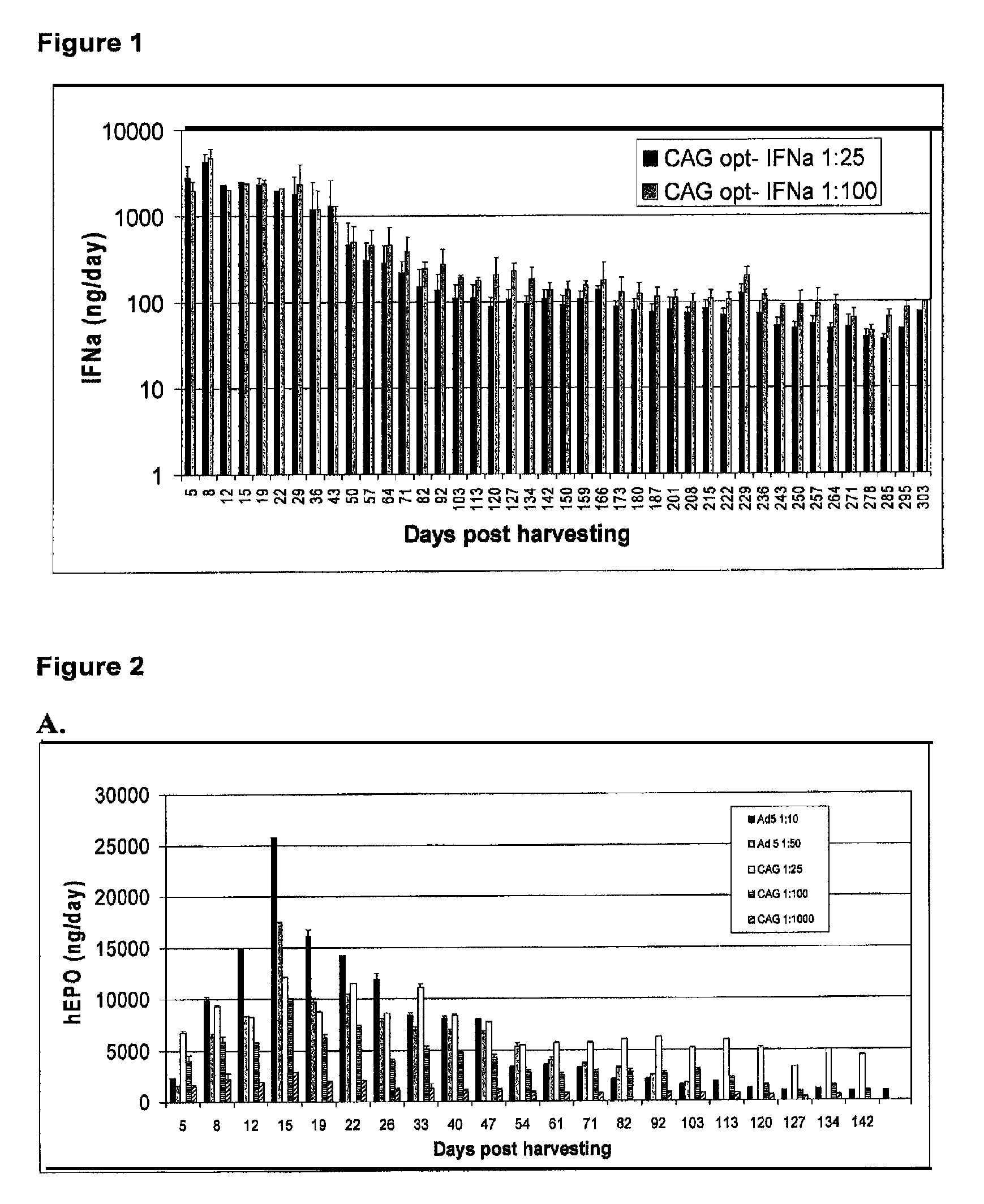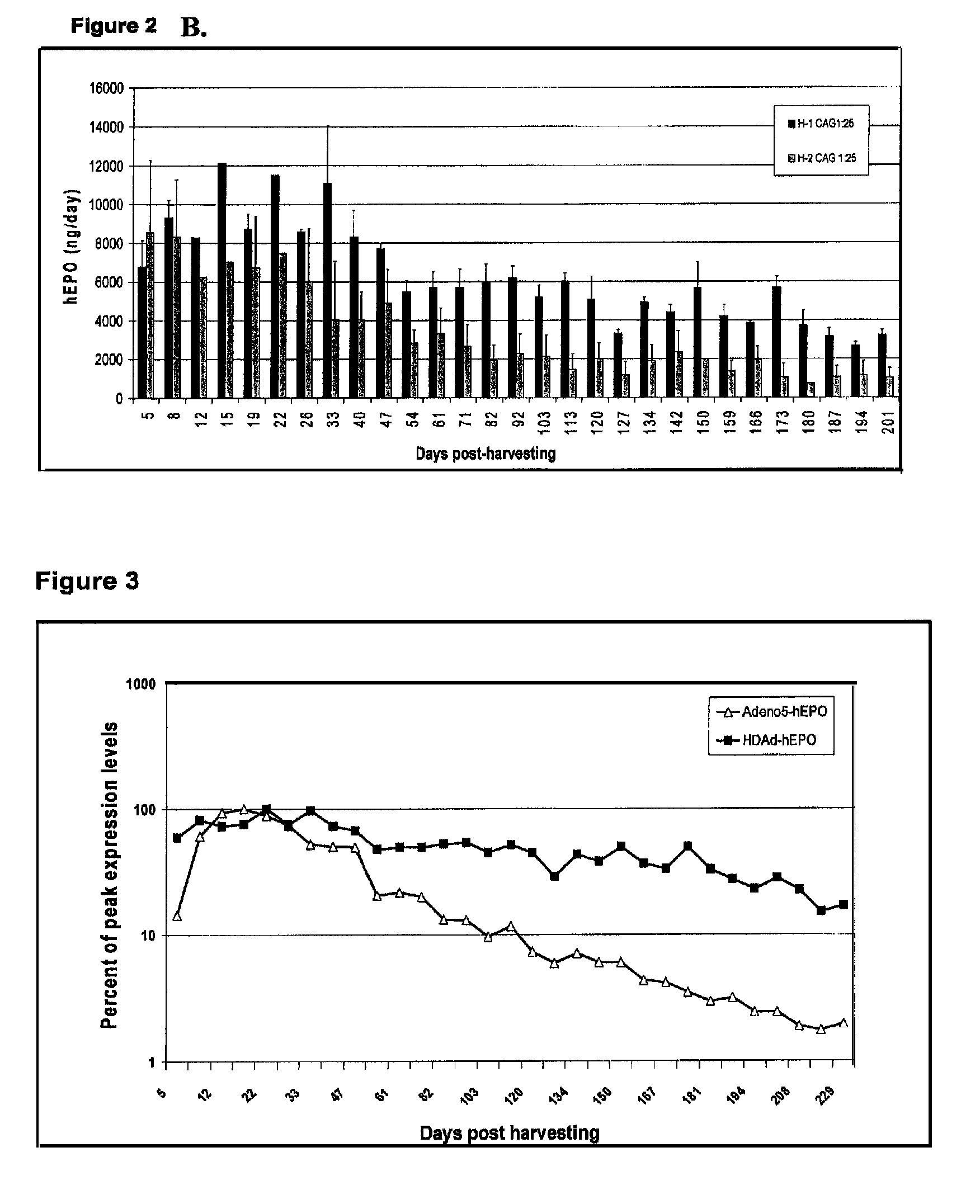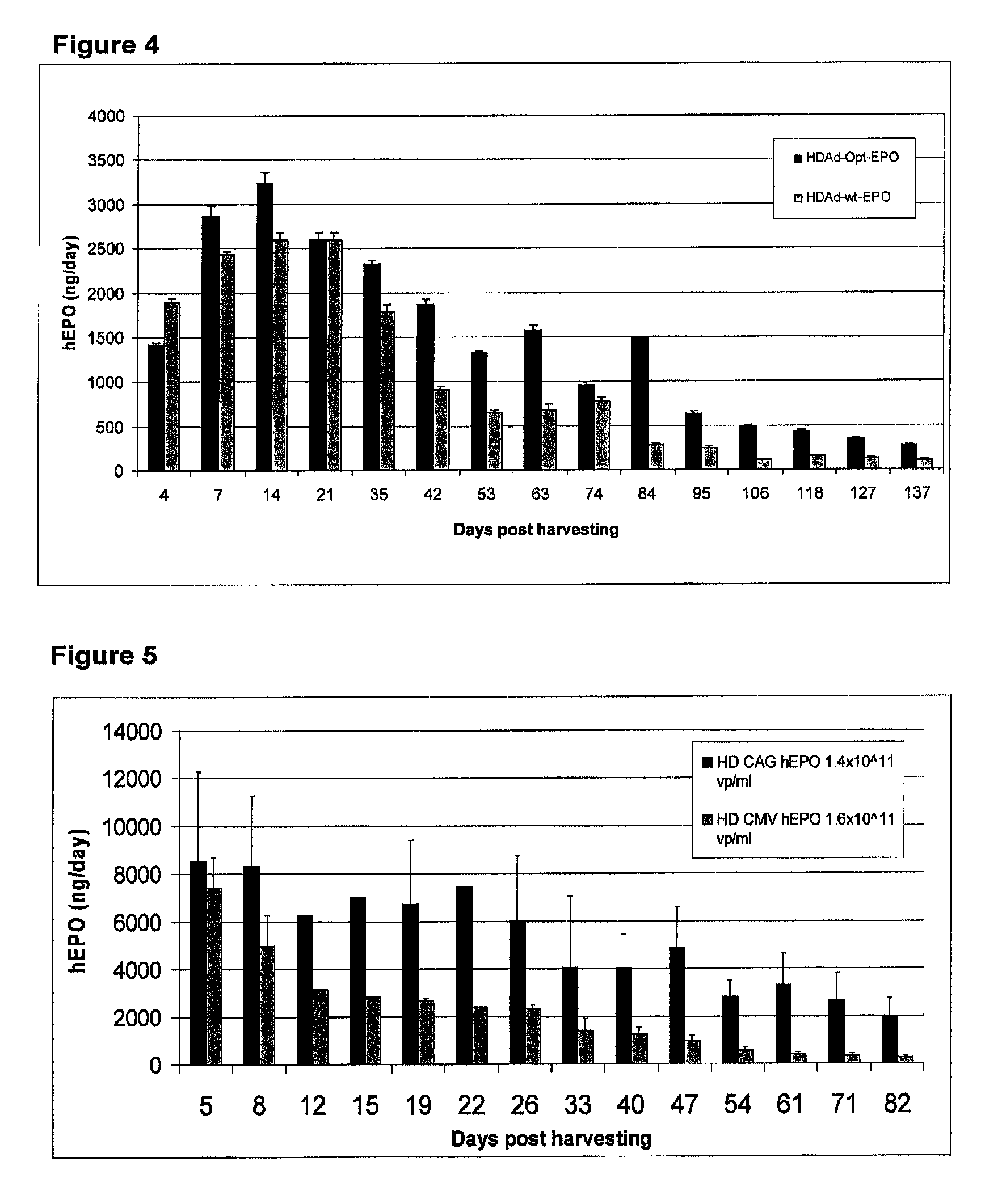Long lasting drug formulations
a technology of long-lasting therapeutic formulations and formulations, applied in the manufacture of genetic therapy compositions, drug compositions, viruses, etc., can solve the problems of limited method of delivery, limited utilization of molecules, and inability to develop purification schemes in a very long process, so as to increase or maintain physiological hemoglobin levels
- Summary
- Abstract
- Description
- Claims
- Application Information
AI Technical Summary
Benefits of technology
Problems solved by technology
Method used
Image
Examples
example 1
EPO and IFNα Levels Produced In Vitro by GMMOs
[0312]Micro-organs were prepared as described above and transduced with a helper-dependent adenoviral vector expressing an optimized IFNα gene linked to a CAG promoter, as described above. GMMOs were then maintained in culture, and the levels of IFNα produced were evaluated by ELISA. Optimized IFNα-expressing micro-organs produced greater than 1000 ng / day of IFNα in vitro (FIG. 1) for at least 40 days post-harvesting, and recombinant hEPO-expressing micro-organs produced greater than 1000 ng / day of hEPO in vitro (FIGS. 2A-B) for at least 142 days post-harvesting.
[0313]GMMOs comprising a gutless adenovirus vector encoding optimized hEPO maintained higher percentages of peak expression for more than 200 days compared to micro-organs comprising an adenovirus-5 vector encoding hEPO (FIG. 3). Micro-organs comprising a gutless adenovirus vector encoding optimized hEPO also maintained a higher percentage of peak expression for a longer period o...
example 2
EPO Levels Produced by Human EPO-Expressing GMMOS Maintained In Vitro and in Serum of Implanted SCID Mice
[0314]EPO-expressing micro-organs were prepared as described above. After a total of nine days in culture, the amount of EPO produced per micro-organ was measured, and this value was used to determine that each mouse was implanted with micro-organs expressing equivalent levels of EPO. On the tenth day, two micro-organs were implanted subcutaneously into each SCID mouse and on the first measurement taken after ten days, levels of hEPO measured in the serum of the SCID mice were significantly above baseline levels. The levels remained high at least 216 days post-implantation and significantly raised hematocrit levels in SCID mice for at least 157 days (FIG. 6A). Non-implanted EPO-expressing micro-organs produced from the same donor at the same time as the implanted EPO-expressing micro-organs but maintained in vitro continuously maintained high levels of EPO production (FIG. 6B). M...
example 3
Increased Hemoglobin (Hb) levels produced by implanting human EPO-expressing GMMO—Human Clinical Trials—
Clinical Studies Overview
[0315]The clinical studies below enlisted anemic, pre-dialysis chronic kidney disease (CKD stage 3-4) patients The CKD stage is based on MDRD-GFR [Modification of Diet in Renal Disease (MDRD) Study equation for estimating Glomerular Filtration Rate (GFR) from serum creatinine]. Patients participating were not iron deficient using measurements of transferrin saturation % (TSAT %) and ferritin (ng / ml) as criteria. Patients were either naïve with respect to EPO-dependency or if EPO-dependent, they are withdrawn from erythropoiesis stimulating agents (ESA) for a period of at least 4 weeks. The term “patient” as used herein may also be referred to herein as a “subject”.
[0316]For determination of Hb baseline, a baseline Hb average of values was determined from the previous 30 days in naïve participants or baseline was determined from the projected nadir 100 days...
PUM
| Property | Measurement | Unit |
|---|---|---|
| diameter | aaaaa | aaaaa |
| diameter | aaaaa | aaaaa |
| length | aaaaa | aaaaa |
Abstract
Description
Claims
Application Information
 Login to View More
Login to View More - R&D
- Intellectual Property
- Life Sciences
- Materials
- Tech Scout
- Unparalleled Data Quality
- Higher Quality Content
- 60% Fewer Hallucinations
Browse by: Latest US Patents, China's latest patents, Technical Efficacy Thesaurus, Application Domain, Technology Topic, Popular Technical Reports.
© 2025 PatSnap. All rights reserved.Legal|Privacy policy|Modern Slavery Act Transparency Statement|Sitemap|About US| Contact US: help@patsnap.com



